Published playwright who would rather write fanfiction instead of working on their next draft
Last active 60 minutes ago
Don't wanna be here? Send us removal request.
Text
The curse of being a screenwriter is sometimes the only good and inspiring idea you’ve had in months is a pitch for a Rick and Morty episode
#y’all I swear I don’t watch it#I did#I have enjoyed it#Dan Harmon is an inspiration of mine and I’ll admit it#but y’all it’s not my fault the premise just happens to fit the idea#rick and morty
2 notes
·
View notes
Text
anyway the world’s hostility towards sex workers is endless and limiting safe options for sex work won’t eliminate it but rather make it more dangerous
4K notes
·
View notes
Text
Tips if you want to start writing
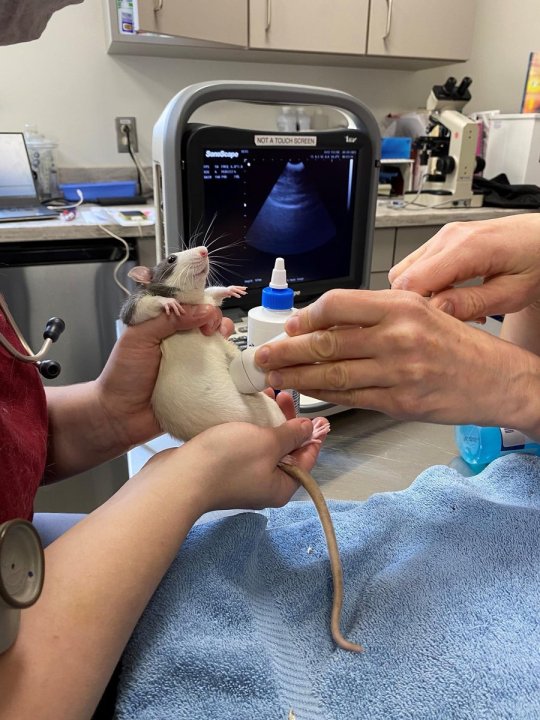
Rat ultrasound
107K notes
·
View notes
Text
Reblog if you are a fanfiction author and would like your readers to put one of your fic titles in your ask + questions about it
81K notes
·
View notes
Text

Writing with Color: Description Guide - Words for Skin Tone
We discussed the issues describing People of Color by means of food in Part I of this guide, which brought rise to even more questions, mostly along the lines of “So, if food’s not an option, what can I use?” Well, I was just getting to that!
This final portion focuses on describing skin tone, with photo and passage examples provided throughout. I hope to cover everything from the use of straight-forward description to the more creatively-inclined, keeping in mind the questions we’ve received on this topic.
So let’s get to it.
S T A N D A R D D E S C R I P T I O N
B a s i c C o l o r s

Pictured above: Black, Brown, Beige, White, Pink.
“She had brown skin.”
This is a perfectly fine description that, while not providing the most detail, works well and will never become cliché.
Describing characters’ skin as simply brown or beige works on its own, though it’s not particularly telling just from the range in brown alone.
C o m p l e x C o l o r s
These are more rarely used words that actually “mean” their color. Some of these have multiple meanings, so you’ll want to look into those to determine what other associations a word might have.

Pictured above: Umber, Sepia, Ochre, Russet, Terra-cotta, Gold, Tawny, Taupe, Khaki, Fawn.
Complex colors work well alone, though often pair well with a basic color in regards to narrowing down shade/tone.
For example: Golden brown, russet brown, tawny beige…
As some of these are on the “rare” side, sliding in a definition of the word within the sentence itself may help readers who are unfamiliar with the term visualize the color without seeking a dictionary.
“He was tall and slim, his skin a russet, reddish-brown.”
Comparisons to familiar colors or visuals are also helpful:
“His skin was an ochre color, much like the mellow-brown light that bathed the forest.”
M o d i f i e r s
Modifiers, often adjectives, make partial changes to a word.The following words are descriptors in reference to skin tone.
D a r k - D e e p - R i c h - C o o l
W a r m - M e d i u m - T a n
F a i r - L i g h t - P a l e
Rich Black, Dark brown, Warm beige, Pale pink…
If you’re looking to get more specific than “brown,” modifiers narrow down shade further.
Keep in mind that these modifiers are not exactly colors.
As an already brown-skinned person, I get tan from a lot of sun and resultingly become a darker, deeper brown. I turn a pale, more yellow-brown in the winter.
While best used in combination with a color, I suppose words like “tan” “fair” and “light” do work alone; just note that tan is less likely to be taken for “naturally tan” and much more likely a tanned White person.
Calling someone “dark” as description on its own is offensive to some and also ambiguous. (See: Describing Skin as Dark)
U n d e r t o n e s
Undertones are the colors beneath the skin, seeing as skin isn’t just one even color but has more subdued tones within the dominating palette.

Mentioning the undertones within a character’s skin is an even more precise way to denote skin tone.
As shown, there’s a difference between say, brown skin with warm orange-red undertones (Kelly Rowland) and brown skin with cool, jewel undertones (Rutina Wesley).
“A dazzling smile revealed the bronze glow at her cheeks.”
“He always looked as if he’d ran a mile, a constant tinge of pink under his tawny skin.”
Standard Description Passage
“Farah’s skin, always fawn, had burned and freckled under the summer’s sun. Even at the cusp of autumn, an uneven tan clung to her skin like burrs. So unlike the smooth, red-brown ochre of her mother, which the sun had richened to a blessing.”
-From my story “Where Summer Ends” featured in Strange Little Girls
Here the state of skin also gives insight on character.
Note my use of “fawn” in regards to multiple meaning and association. While fawn is a color, it’s also a small, timid deer, which describes this very traumatized character of mine perfectly.
Though I use standard descriptions of skin tone more in my writing, at the same time I’m no stranger to creative descriptions, and do enjoy the occasional artsy detail of a character.
C R E A T I V E D E S C R I P T I O N
Whether compared to night-cast rivers or day’s first light…I actually enjoy seeing Characters of Colors dressed in artful detail.
I’ve read loads of descriptions in my day of white characters and their “smooth rose-tinged ivory skin”, while the PoC, if there, are reduced to something from a candy bowl or a Starbucks drink, so to actually read of PoC described in lavish detail can be somewhat of a treat.
Still, be mindful when you get creative with your character descriptions. Too many frills can become purple-prose-like, so do what feels right for your writing when and where. Not every character or scene warrants a creative description, either. Especially if they’re not even a secondary character.
Using a combination of color descriptions from standard to creative is probably a better method than straight creative. But again, do what’s good for your tale.
N A T U R AL S E T T I N G S - S K Y

Pictured above: Harvest Moon -Twilight, Fall/Autumn Leaves, Clay, Desert/Sahara, Sunlight - Sunrise - Sunset - Afterglow - Dawn- Day- Daybreak, Field - Prairie - Wheat, Mountain/Cliff, Beach/Sand/Straw/Hay.
Now before you run off to compare your heroine’s skin to the harvest moon or a cliff side, think about the associations to your words.
When I think cliff, I think of jagged, perilous, rough. I hear sand and picture grainy, yet smooth. Calm. mellow.
So consider your character and what you see fit to compare them to.
Also consider whose perspective you’re describing them from. Someone describing a person they revere or admire may have a more pleasant, loftier description than someone who can’t stand the person.
“Her face was like the fire-gold glow of dawn, lifting my gaze, drawing me in.”
“She had a sandy complexion, smooth and tawny.”
Even creative descriptions tend to draw help from your standard words.
F L O W E R S
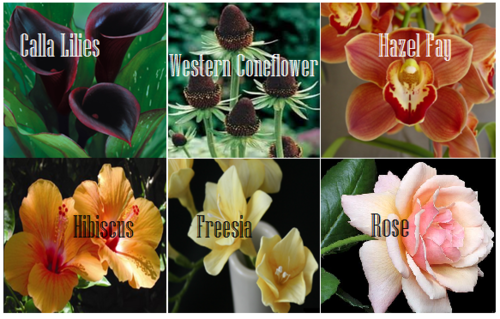
Pictured above: Calla lilies, Western Coneflower, Hazel Fay, Hibiscus, Freesia, Rose
It was a bit difficult to find flowers to my liking that didn’t have a 20 character name or wasn’t called something like “chocolate silk” so these are the finalists.
You’ll definitely want to avoid purple-prose here.
Also be aware of flowers that most might’ve never heard of. Roses are easy, as most know the look and coloring(s) of this plant. But Western coneflowers? Calla lilies? Maybe not so much.
“He entered the cottage in a huff, cheeks a blushing brown like the flowers Nana planted right under my window. Hazel Fay she called them, was it?”
A S S O R T E D P L A N T S & N A T U R E

Pictured above: Cattails, Seashell, Driftwood, Pinecone, Acorn, Amber
These ones are kinda odd. Perhaps because I’ve never seen these in comparison to skin tone, With the exception of amber.
At least they’re common enough that most may have an idea what you’re talking about at the mention of “pinecone."
I suggest reading out your sentences aloud to get a better feel of how it’ll sounds.
"Auburn hair swept past pointed ears, set around a face like an acorn both in shape and shade.”
I pictured some tree-dwelling being or person from a fantasy world in this example, which makes the comparison more appropriate.
I don’t suggest using a comparison just “cuz you can” but actually being thoughtful about what you’re comparing your character to and how it applies to your character and/or setting.
W O O D

Pictured above: Mahogany, Walnut, Chestnut, Golden Oak, Ash
Wood can be an iffy description for skin tone. Not only due to several of them having “foody” terminology within their names, but again, associations.
Some people would prefer not to compare/be compared to wood at all, so get opinions, try it aloud, and make sure it’s appropriate to the character if you do use it.
“The old warlock’s skin was a deep shade of mahogany, his stare serious and firm as it held mine.”
M E T A L S

Pictured above: Platinum, Copper, Brass, Gold, Bronze
Copper skin, brass-colored skin, golden skin…
I’ve even heard variations of these used before by comparison to an object of the same properties/coloring, such as penny for copper.
These also work well with modifiers.
“The dress of fine white silks popped against the deep bronze of her skin.”
G E M S T O N E S - M I N E R A LS

Pictured above: Onyx, Obsidian, Sard, Topaz, Carnelian, Smoky Quartz, Rutile, Pyrite, Citrine, Gypsum
These are trickier to use. As with some complex colors, the writer will have to get us to understand what most of these look like.
If you use these, or any more rare description, consider if it actually “fits” the book or scene.
Even if you’re able to get us to picture what “rutile” looks like, why are you using this description as opposed to something else? Have that answer for yourself.
“His skin reminded her of the topaz ring her father wore at his finger, a gleaming stone of brown, mellow facades.”
P H Y S I C A L D E S C R I P T I ON
Physical character description can be more than skin tone.
Show us hair, eyes, noses, mouth, hands…body posture, body shape, skin texture… though not necessarily all of those nor at once.
Describing features also helps indicate race, especially if your character has some traits common within the race they are, such as afro hair to a Black character.
How comprehensive you decide to get is up to you. I wouldn’t overdo it and get specific to every mole and birthmark. Noting defining characteristics is good, though, like slightly spaced front teeth, curls that stay flopping in their face, hands freckled with sunspots…
G E N E R A L T I P S
Indicate Race Early: I suggest indicators of race be made at the earliest convenience within the writing, with more hints threaded throughout here and there.
Get Creative On Your Own: Obviously, I couldn’t cover every proper color or comparison in which has been “approved” to use for your characters’ skin color, so it’s up to you to use discretion when seeking other ways and shades to describe skin tone.
Skin Color May Not Be Enough: Describing skin tone isn’t always enough to indicate someone’s ethnicity. As timeless cases with readers equating brown to “dark white” or something, more indicators of race may be needed.
Describe White characters and PoC Alike: You should describe the race and/or skin tone of your white characters just as you do your Characters of Color. If you don’t, you risk implying that White is the default human being and PoC are the “Other”).
PSA: Don’t use “Colored.” Based on some asks we’ve received using this word, I’d like to say that unless you or your character is a racist grandmama from the 1960s, do not call People of Color “colored” please.
Not Sure Where to Start? You really can’t go wrong using basic colors for your skin descriptions. It’s actually what many people prefer and works best for most writing. Personally, I tend to describe my characters using a combo of basic colors + modifiers, with mentions of undertones at times. I do like to veer into more creative descriptions on occasion.
Want some alternatives to “skin” or “skin color”? Try: Appearance, blend, blush, cast, coloring, complexion, flush, glow, hue, overtone, palette, pigmentation, rinse, shade, sheen, spectrum, tinge, tint, tone, undertone, value, wash.
Skin Tone Resources
List of Color Names
The Color Thesaurus
Things that are Brown (blog)
Skin Undertone & Color Matching
Tips and Words on Describing Skin
Photos: Undertones Described (Modifiers included)
Online Thesaurus (try colors, such as “red” & “brown”)
Don’t Call me Pastries: Creative Skin Tones w/ pics 3 2 1
Writing & Description Guides
WWC Featured Description Posts
WWC Guide: Words to Describe Hair
Writing with Color: Description & Skin Color Tags
7 Offensive Mistakes Well-intentioned Writers Make
I tried to be as comprehensive as possible with this guide, but if you have a question regarding describing skin color that hasn’t been answered within part I or II of this guide, or have more questions after reading this post, feel free to ask!
~ Mod Colette
169K notes
·
View notes
Text



Some highlights from my WIP~
#tw: slut shaming#playwright#playwriting#theatre kid#theatre#writeblr#wip#new work#play#lgbtq#lgbtq art
0 notes
Text
Like your bedroom, your writing room should be private, a place where you go to dream.
Stephen King (in ‘On Writing’)
176 notes
·
View notes
Text
The fun part about going to a theatre school is that, instead of spending a shit ton of money on textbooks, I get to spend a shit ton of money on scripts, music, and rehearsal clothing instead!
#personal#theatre kid#tech theatre#theatre#theaterarts#performingarts#musical theatre#college#student
23 notes
·
View notes
Photo

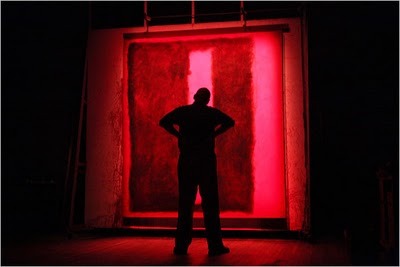

Play Recommendation of the Week(ish):
Red by John Logan
I haven’t done one of these in a while but I came across this play and absolutely fell in love with it. It follows a young painter, Ken, as he starts his apprenticeship under the famous painter Mark Rothko. I think the reason this play really stuck with me was the commentary it makes on overthinking art. There’s a very fine line between understanding the meaning behind art, and pretention. I see this a lot, not only with paintings, but also with theatre, music, and really any form of entertainment. People like to dictate what “real” art is, which is a very destructive game to play.
This piece does an excellent job deconstructing the pretentious artist, and I think this is one of the few things I’ve come across that manages to do that while also respecting that paintings do have very real meanings behind them that are important to understand.
If you have audible (Which I’m in no way encouraging you to get, this is just where I happened to stumble on this show) There’s an excellent live recording starring Jonathan Groff and Alfred Molina which I whole-heartedly encourage you to find.
6 notes
·
View notes
Text
I have a radical proposition for you, and that is: Writing should be fun!
That doesn’t mean it’s always fun, of course. It doesn’t mean it’s always easy. It doesn’t mean it requires zero effort or stubbornness or determination. But it does mean that, more often than not, writing should make you happy.
It’s just that it’s easy on social media to watch the memes circulate about how awful writing is, about how a writer would rather do anything other than write, about how it’s a painful process, like pulling teeth or carving your own heart out. And it can be. It definitely can be. And if that’s what you’re looking for from writing, then that’s fine.
But writing also be…fun! Not every day of your writing life has to be a day when you resent the action, when you would do anything to avoid it. These writing memes focusing on the negatives might lead you to believe that it’s always horrible and everyone who does it hates it all the time. Don’t let them fool you. That isn’t an inevitability. Writing can be like anything else you decide to have a relationship with: It can make you happier more often than not, and it can make your life overall happier to have it in it.
2K notes
·
View notes
Text
I’m sick of live theater being presented as if it’s Broadway-only: people complain that theater is expensive, inaccessible, and for the privileged because they look at Broadway like some kind of theater-Disneyland where all the theater is held.
When you suggest that people pay maybe 5-20$ to see theater at a local high school, college, community, or regional theater tho that’s “cringey” or worse, “‘not actually theater.”
Fucking hell. A lot of small-scale theater productions are not only incredibly high-quality but also incredibly diverse but they don’t “count” the way other media does despite making massive steps for accessibility for the disabled and for often having predominantly queer performers.
I bet you can see live local theater for about the same cost as a trip to the movies: not everywhere, obviously, but lots and lots of places.
7K notes
·
View notes
Text
broadway songs i used to like but now cannot listen to
• sincerely me
• the entirety of hamilton
•michael in the bathroom
•i know i already said all of hamilton but i really hate my shot
• candy store
21 notes
·
View notes
Text
How to Write a Play
NOTE: The following is my advice for staged productions (live theatre), not necessarily film. I’ve had original plays produced professionally, but I’ve never written a full-length screenplay before.
1. Writer’s block is a myth. The only thing preventing you from writing is your own cowardice. Write one page. Write five lines. Write one line. You can. I promise.
2. These aren’t the same as characters in a story, novel or other prose work. They’re 50% you and 50% the actors. Leave a little room in each role for an actor to grow into.
3. Think about staging. Can you fit every room of a two story house onstage? Maybe! But how is it going to work?
4. On the other hand, don’t over-describe your sets. You usually want a versatile script, especially if it’s one of the first plays you’ve ever written. I usually try to write plays that could be adapted for a black box or a big proscenium or a little community theatre or a Broadway stage. Describing every detail of your set is stifling and prevents adaptations.
5. Write the first draft in a format that makes sense to you, then look up more professional playwriting formats when you’re editing later.
6. Stage directions can make or break a show.
7. Don’t be afraid to be real or go dark. Plays (and musicals) don’t always have to be glitzy and overacted. You can write the way real people talk if that’s what your story needs.
8. Conversely, don’t be afraid to write something crazy or campy or just plain ridiculous. Not every play (or musical) has to be an intensely metaphorical, erudite commentary on a relevant social issue. It’s ok to write something just to make people laugh.
9. As with any work, be ruthless about your editing, when the time comes. Your personal favorite character may be woefully underdeveloped and in need of serious re-writes. The super indulgent scene might be what’s bogging the plot down.
10. When you’re done with the first draft, type “FIN” or “THE END” in capitals at the end. It’ll feel so good.
Good luck! I’m always happy to answer writing-related questions!
143 notes
·
View notes
Text
my favorite “bad” lgbt rep:
bob from bob’s burgers
whatever the fuck is going on in it’s always sunny in philidelphia
those characters in classic lit that are gay but they aren’t but they are gay no they aren’t yes🙈
my lesbian OCs from when i was 12
like me as a living person
119K notes
·
View notes
Photo

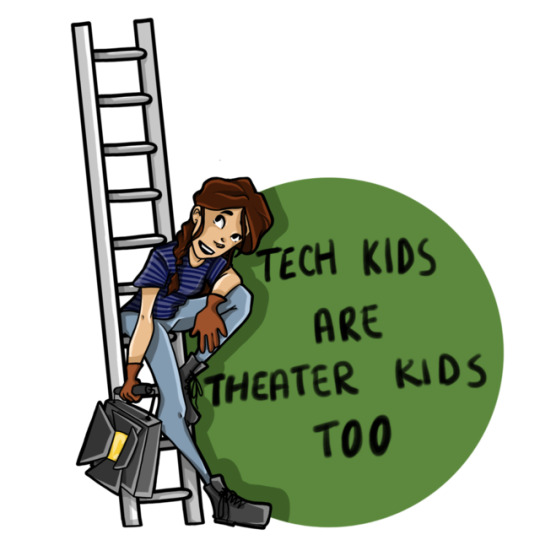
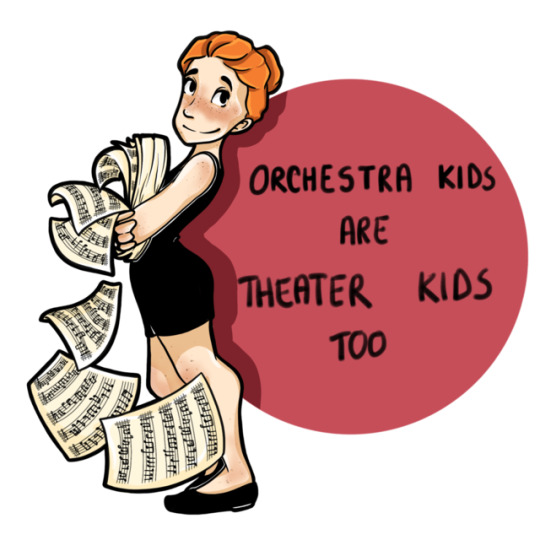
Not just actors are theater kids ♥️ A shout out to the rest of the team!
53K notes
·
View notes
Text
Guess who got a "new" typewriter for their birthday! It's from my father, which isn't great, but I'm going to enjoy it nonetheless. RIP to convenient writing methods, I'm an aesthetic bitch now.

0 notes
Text


Play reccomendation of the week:
Decision Height by Meridith Dayna Levy
I recently did an abridged verion of this play as part of the UIL One Act Play competition. It follows a group of WASP (Women Airforce Service Pilot) trainees over the course over the course of several months.
An incredibly strong play, its cast list is entirely made up of unique women from different walks of life, who all find themselves becoming close through the course of their training. It's narrated mainly by a woman named Virginia Hawkins through a series of one-sided letters to her disapproving husband, though she definitely isn't the focus of the show.
I'm not usually a huge fan of historical pieces, but this one still holds a place in my heart, so I definitely reccomend you give it a read if you get the chance.
1 note
·
View note